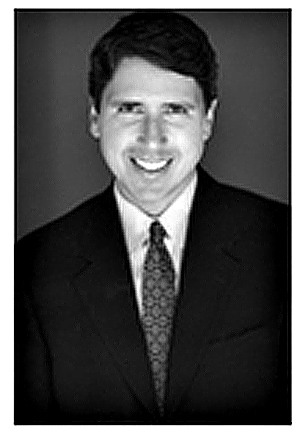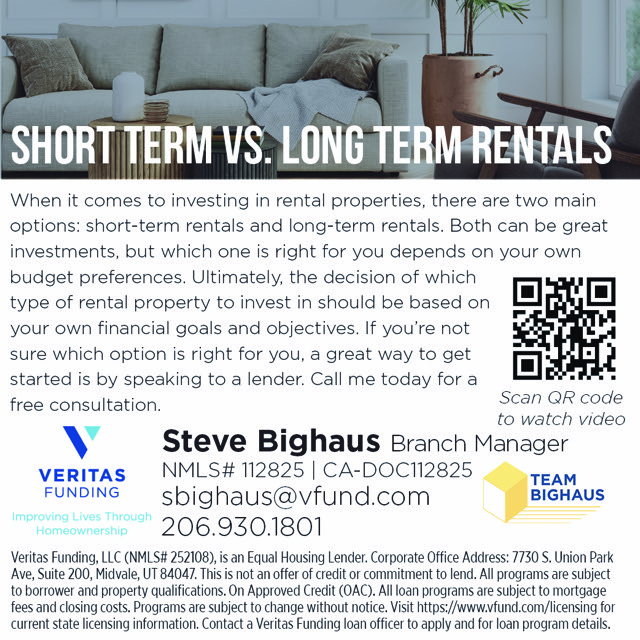
By Rick Tobin
Why can’t commercial lending be as flexible as residential lending? Residential mortgage lending for one-to-four unit properties has become more automated and streamlined for investors as we move forward here in the 21st century. More homeowners and investors are seeking out experienced independent mortgage brokers who may have relationships with numerous financial institutions, nonbank lenders, or private money sources. With a few clicks of a button, the mortgage professional can quickly find the best financial solutions available for their clients and get approvals within minutes, hours, or days.
Commercial property lending, on the other hand, still seems stuck in the 20th century for many commercial applicants. It can be perceived as a “good ol’ boy/girl network” in that the commercial loan applicant needs to have some sort of a long-established personal relationship with their local community banker dating back to high school, college, or as fellow members at the local golf club before their loan requests are approved. If so, will they be types of friendly handshake approvals or not-so-friendly “take it or leave it” approvals?
ADVERTISEMENT
If the commercial loan applicant is fortunate to find a banker who may consider their deal, this same banker may request that the borrower move their deposits from other financial institutions to their bank before considering the applicant’s loan request. Should the loan be rejected either quickly or months later after a rather brutal loan underwriting process that may include a footlong stack of paperwork, the disheartened customer may give up hope and not know where to turn for another lending option.
Today, non-owner occupied residential properties (one-to-four units) offered as short-term or long-term rentals, multifamily apartments (5+ units), mixed-use, office, industrial, retail, and special purpose (auto repair shops, etc.) can all be viewed as a “commercial loan” by certain nonbank lenders that don’t collect customer deposits like traditional banks. With lower loan-to-value (LTV) ranges for certain asset-based loan products, the risk of default is lower for the nonbank lenders.
Wealth Creation from Commercial Property Ownership

Let’s take a look at commercial property trends and how much wealth was created for those fortunate owners who learned that it’s much better to let their money work hard for them than vice versa:
- The estimated total dollar value of commercial real estate was $20.7 trillion as of Q2 2021. (Nareit and CoStar)
- By 2050, commercial building floor space is expected to reach 124.3 billion square feet, a 33% increase from 2020. (Center for Sustainable Systems, University of Michigan)
- 72% of commercial buildings in the US are 10,000 square feet or smaller. (National Association of Realtors)
- The typical length of a building lease in the US is three to 10 years. (DLA Piper)
- Commercial property prices rose by 20% between May 2021 and May 2022. (Green Street)
- An estimated one-third of industrial space in the US is more than 50 years old. (NMRK)
- For every $1 billion of growth in the e-commerce sector, it requires an extra 1.2 million square feet of new warehouse space. (Prologis)
- Self-storage commercial unit REITs produced a 70% market return in 2021 (REIT)
- Approximately 69% of all commercial buyers in the US need financing to purchase properties. (National Association of Realtors)
- Sales of multifamily apartment buildings increased by 22.4% year-on-year in 2022 (Colliers)
- Prior to the March 2020 pandemic designation, the industrial real estate sector had grown for 40 consecutive quarters or over 10 years. (NMRK)
- Industrial vacancy rates nationwide fell below 3.7% at the end of 2021. (Cushman & Wakefield)
- The Inland Empire (Riverside and San Bernardino counties) in California averaged an incredibly low 1.2% vacancy rate for industrial space. (Commercial Edge)
- California had 27 of the 50 highest office rental prices in 2021. (Commercial Search)
- The average annual return for commercial real estate investors is approximately 9.5%. (Mashvisor)
- For every retail unit that closes, five new stores open up. (NRF)
Technological Advances for Commercial Loans

What if the commercial lending process could be digitized, sped up, and completed on a secure online loan application with just one point of contact? Your odds of success for getting a commercial property loan approved for a multifamily apartment building, mini-storage site, or small retail center will be much higher if your financial contact person is very experienced with commercial lending and has access to numerous lenders.
Commercial loans are somewhat like giant jigsaw puzzles. While the applicant’s loan package may not fit the guidelines required at one, two, or 10 different lenders, there are other lenders that have more flexible guidelines which allow lower positive, break-even, or even negative DSCR (Debt Service Coverage Ratio) with or without income verification.
Properties with lower positive cash flow or even negative cash flow estimates will likely not qualify at a local community bank or credit union. Yet, they may qualify with other nonbank lenders that do allow break-even or negative cash flow. Some of our lending partners are asset-based lenders that don’t review the applicant’s tax returns as well as provide financing for property improvements. These types of incredibly flexible lending guidelines can make the commercial loan application process much easier for the borrower.
ADVERTISEMENT
An Imploding Financial System and Increasing Bank Restrictions
In 2008, the Credit Crisis (aka Financial Crisis, Subprime Mortgage Crisis, or Global Financial Crisis) default risks became more readily apparent as these prominent financial institutions or government entities collapsed and/or were bailed out:
- Bear Stearns: The fifth largest investment firm in the world that was heavily invested in mortgage-backed securities, collateralized debt obligations (CDOs), and other complex securities or derivatives instruments.
- Lehman Brothers: The biggest bankruptcy ever involving over $600 billion in assets.
- Washington Mutual (WAMU): Largest bank implosion in US history with almost $328 billion in assets.
- FDIC (Federal Deposit Insurance Corporation): They only held $40 billion in cash reserves at the time of WAMU’s collapse, so the government had to silently bail them out to prevent bank runs.
- Countrywide Mortgage: Once America’s #1 residential mortgage lender that almost imploded prior to being bailed out by Bank of America.
- American International Group (AIG): They were the world’s largest insurance company and were bailed out by the US government starting with $85 billion while growing to more than $182 billion several years later.
- Merrill Lynch: The world’s largest stock brokerage firm at the time with $2.2 trillion under management and 15,000 brokers that was taken over by Bank of America.

A derivative is a complex hybrid financial and insurance instrument which “derives” value from underlying assets or benchmarks like interest rate direction trends. Some financial analysts have stated that the total value of all global derivatives may be somewhere within the $1,500 to $3,000 trillion dollar region. If so, these derivatives dwarf all combined global assets by a significant multitude.
Because so many banks, investment firms, and insurance companies are heavily invested in one another partly by way of derivatives, this was why the Federal Reserve, the Bank of England, and other central banks around the world had to step in and bail out these multi-billion or multi-trillion dollar financial or insurance entities, directly or indirectly through others like Bank of America. If not, the global financial system would have fallen like a dominoes chain reaction.
Later, the LIBOR (London Interbank Offered Rate) Scandal, which came to light publicly in 2012, gave us a glimpse of the sheer magnitude of the derivatives market. This financial scandal was about how certain financial institutions invested or bet on the future direction of interest rates tied to LIBOR (the benchmark interest rate at which major global banks lend to one another) while being claimed to be rigged or known ahead of time so that the derivatives bets had a better chance of success.
Several publications like Rolling Stones Magazine wrote articles about the LIBOR Scandal potentially being the largest financial scandal in world history that affected upwards of $500 to $700 trillion in global assets. The named financial institutions in various publications or lawsuits which were alleged to have benefited, directly or indirectly, in the LIBOR Scandal included Deutsche Bank, HSBC, Barclays, Citigroup, JP Morgan Chase, and the Royal Bank of Scotland.
What’s important to understand is that many of the best known banks in the world may only have a few trillion of depositor assets in their checking and savings accounts today. However, they may have exposure to upwards of $50 + trillion in derivatives. As a result of their financial exposure to derivatives, these banks may be unwilling or unable to make investment property loans to even their most creditworthy clients partly due to tighter lending restrictions that came from the passage of the Dodd-Frank Act back in 2010.
This is why mortgage brokers and their non-bank lending partners became the better funding solution for investors while “handshake deals” at local banks don’t matter as much because so many banks may be technically insolvent.
Ironically, it was claimed that delinquent subprime mortgages represented less than 1% of all financial losses related to the Credit Crisis or Financial Crisis. Rather, the complex derivatives investments that were leveraged 50+ times the original amount of investments such as interest-rate options were the root cause. Sadly, mortgage professionals and stated income subprime loans still continue to be primary scapegoats. As a result, fewer banks are willing to offer more flexible residential or commercial property loans that don’t verify income.

Value Analysis for Commercial Properties
How lenders analyze income and expenses for commercial properties can be quite complex and overwhelming. Properties that do not meet most or all of these stringent underwriting guidelines may be prime candidates for asset-based loans.
Let’s try to review and simplify some key valuation terms that lenders may consider before approving or denying a borrower’s request:
Loan-to-value (LTV): The proposed loan amount as a percentage of the estimated property value. Many lenders prefer a loan-to-value range somewhere within the 50% to 75% LTV range. For purchase deals, these same lenders prefer that their clients put upwards of 25% to 50% of the purchase price as a cash down payment, depending upon the creditworthiness of the borrower and the property type.
Net Operating Income (NOI): The NOI for a commercial property can be summed up as follows: Gross Income – Operating Expenses = NOI
The property’s operating expenses include insurance, property management, utilities, and other day-to-day costs related to maintaining the property. However, the mortgage payments are not included within the NOI calculation.
Cap or Capitalization Rate: It’s a mathematical formula used to calculate the real or projected future rate of return on a property based on the net operating income that the property generates. The lower the cap rate, the better the property. Higher cap rates, in turn, are viewed as riskier investments. Cap Rate = NOI / Current Market Value

Property values and cap rates are inverse to one another like a seesaw. Decreasing cap rates as seen with prime downtown properties that are fully occupied leads to increasing property values. Conversely, rising cap rates for older rundown commercial properties usually correspond with falling property values.
Value Estimate: The property’s value estimate can be determined by way of the following formula: NOI / Cap Rate
For example, let’s look at two multifamily apartment buildings located in different cities with the exact same NOI but cap rates that are not nearly the same:
Building 1: $160,000 NOI divided by an 8% cap rate ($160,000 / .08%) = $2,000,000 value
Building 2: $160,000 NOI divided by a 4.5% cap rate ($160,000 / .045%) = $3,555,556 value
Generally, multifamily apartment rates have the lowest cap rates for income-producing properties that aren’t considered to be residential (one-to-four unit) properties. As per an analysis for the 2nd quarter of 2022 by Real Capital Analytics and the NAR, here are their numbers:
Property Type
Apartments
Industrial
Office
Retail
Cap Rate
4.5%
5.7%
6.3%
6.3%
DSCR: The easiest way to remember the debt service coverage ratio (DSCR) is that it’s used to determine whether or not a property has positive (1.25x), neutral or break-even (1.0x), or negative cash flow (0.75x). The DSCR is the ratio of operating income that’s available on a monthly or annual basis to service or cover the monthly mortgage payment (principal, interest, property taxes, insurance, etc.). As a mathematical formula, the DSCR can be visualized as follows: NOI / Debt Service
A small retail center that generates $10,000 per month in operating income and has a projected $8,000 per month in total mortgage payments would be calculated at 1.25x DSCR because the monthly or annual cash flow is 25% higher than the debt service ($10,000 / $8,000 = 1.25x). The net difference between $10,000 inflow and $8,000 debt service outflow is $2,000. This can also be calculated as $2,000 divided by the $8,000 in debt service ($2,000 / $8,000) which equals 25% more net cash flow to arrive at 1.25x DSCR.
Debt Yield: The commercial property’s NOI as a percentage of their total loan amount. The mathematical formula is as follows: NOI / Loan Amount = Debt Yield
For example, a small industrial building owner collects $100,000 NOI each year. His existing mortgage loan balance is $1 million, so his annual debt yield is 10% ($100,000 NOI / $1 million mortgage balance).
Multiple Underwriting Approval Solutions

As you better learn how lenders analyze properties, you will clearly understand that you have more than one loan program available. Some properties and owners will easily qualify after sharing tax returns, liquid assets, profit-and-loss statements, and a detailed income and expense history for their property. Other investors, however, know that their property’s cash flow is break-even or negative, but the future upside for these properties can be tremendous after occupancy rates are pushed higher.
Many commercial property owners experienced unusually high vacancy rates in recent years due to the combination of the pandemic, skyrocketing inflation, rising tenant payment delinquencies, and increasing rates for consumer debt. If so, the income and expense numbers for these commercial properties will probably not qualify at a traditional bank.
Commercial borrowers are more likely to qualify with asset-based nonbank lenders that may not closely review the income and expense numbers for the property. The verifying of income for asset-based, nonbank lenders isn’t necessary because these loans are based more on the appraised value of the subject property and its future income potential. At a later date when the income and occupancy rates are higher while the operating expenses decline, the owner can refinance into a much longer loan term at a lower rate and monthly payment.
Remember, it’s much better to have multiple lending options available for your property purchases or ballooning loan or cash-out refinance needs than just one local bank. The more efficient and flexible the mortgage broker’s technological systems and nonbank lending sources, the more likely you will close your loan and create significant income and increased wealth.

Rick Tobin
Rick Tobin has a diversified background in both the real estate and securities fields for the past 30+ years. He has held seven (7) different real estate and securities brokerage licenses to date, and is a graduate of the University of Southern California. Rick has an extensive background in the financing of residential and commercial properties around the U.S with debt, equity, and mezzanine money. His funding sources have included banks, life insurance companies, REITs (Real Estate Investment Trusts), equity funds, and foreign money sources. You can visit Rick Tobin at RealLoans.com for more details.
Learn live and in real-time with Realty411. Be sure to register for our next virtual and in-person events. For all the details, please visit Realty411.com or our Eventbrite landing page, CLICK HERE.


